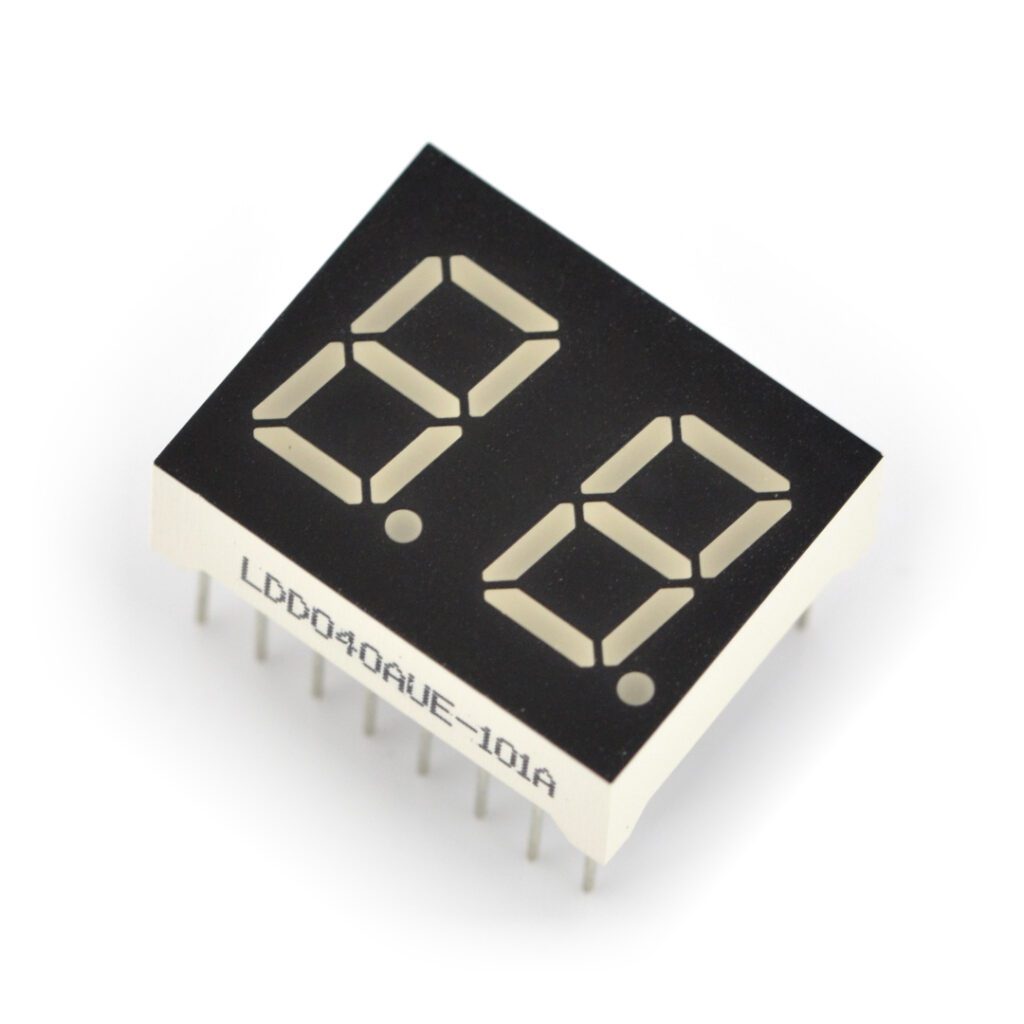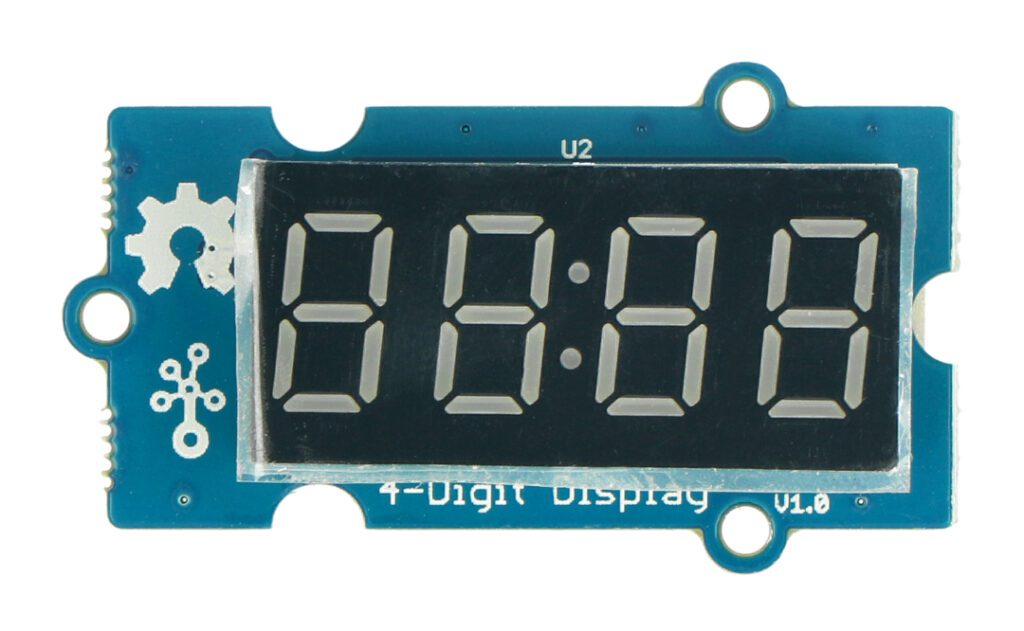Table of Contents:
Have you ever wondered how a 7-segment display works and what makes it so popular? Here is an article that will introduce you to the ins and outs of this small but extremely important electronic component. Learn more about its design, principle of operation and where it is used. After reading this article, the term 7-segment display will not be a mystery to you!
7-segment display - let's start with the basics
7-segment display
is a popular electronic component used to display digits from 0 to 9. This type of display, as the name suggests, consists of seven illuminated segments that can be lit in various combinations to represent digits. Depending on the technology, segments can be made of LEDs, liquid crystals or even plasma poles.
The principle of the 7-segment display is to control the flow of current through each segment. Each segment can be turned on or off independently. Therefore, by manipulating the segments, we can generate numerical values. For example, to generate the number 8, we need to light all the segments. In turn, to generate the number 1, we light only the two right segments. Because of this, the 7-segment display is a key component of many devices – from digital watches to the control panel of a microwave.
7-segment display - construction and scheme
Construction
7-segment display
is relatively simple, but understanding its details allows you to fully understand its functioning.
As mentioned, the 7-segment display consists of seven illuminated sections, called segments. They are labeled with the letters A through G. Each segment is lit independently, allowing you to create different combinations to represent the digits.
The diagram of the 7-segment display is the layout of the segment connections. A single segment is controlled by a dedicated pin, so that each segment can be controlled independently. Depending on the model chosen, 7-segment displays can be anodic or cathodic, meaning that current can flow through them in one or both directions.
The two varieties have slightly different schemes, but both are based on the same idea of controlling the flow of current through the various segments. This method makes the 7-segment display an extremely versatile item that helps display information in many devices.
Different types and kinds of 7-segment displays
Although each 7-segment display functions on a similar principle, they differ in design, technology and even the color of the light emitted by the segments. Some of them are made of LEDs, which are popular for their high energy efficiency and longevity. LED 7-segment displays are often used in digital watches, calculators and various control panels.
Another type is 7-segment LCD displays, which use liquid crystals to create visible digits. They are energy-efficient and highly visible even in bright light, making them a popular choice for mobile devices.
Another type is 7-segment displays made of plasma poles. These, in turn, are sometimes used in professional measuring devices due to the high precision of the information presented.
In summary, 7-segment display technology is versatile and flexible enough to be used in a variety of applications, adapting to the specific situation, needs and expectations of the user.
On what principle does the 7-segment display work?
Taking a closer look at the operation of the 7-segment display, we come across several unique control mechanisms. As we have already learned from the previous paragraphs, the key to understanding how a 7-segment display works lies in the independent control of current flow through each of the seven segments.
Each segment, labeled A through G, can be controlled independently through dedicated pins. As a result, by manipulating the flow of current through each segment, we can generate numbers from 0 to 9. In practice, the control of a 7-segment display, involves the proper selection of lit segments to get the expected digit.
For example, simulating the digit 3 on a 7-segment display means lighting up the A, B, C, D, and G segments. All this is due to the precise and well-designed structure of the 7-segment display, which, despite its simplicity, is extremely effective and irreplaceable in many everyday devices.
Examples of applications of the 7-segment display
Effective use of numerical iconography makes the 7-segment display a feature present in many places. Its applications are both everyday and specialized, demonstrating the flexibility and versatility of this technology.
The wide application of the 7-segment display mainly covers the equipment we use every day. We often find them in homes, offices or gyms – in digital watches, alarm clocks, microwaves or on exercise treadmills. With them, we can easily monitor the time, the pace of the run or set the right temperature for heating the meal.
In the automotive industry, 7-segment displays are often used in vehicle counters or control displays in cars. In complex specialized electronics, on the other hand, the use of a 7-segment display makes it possible to present measurement results, whether in voltage meters, energy meters or medical equipment like blood pressure monitors. In either case, the use of a 7-segment display makes the information easily readable and accessible at a glance.
As you can see, 7-segment displays accompany us practically every step of the way – from the simplest items, such as calculators and watches, to more complex ones, such as cars. The 7-segment display is a good example of how simple technology affects more complex designs.
How useful was this post?
Click on a star to rate it!
Average rating 5 / 5. Vote count: 1
No votes so far! Be the first to rate this post.





















